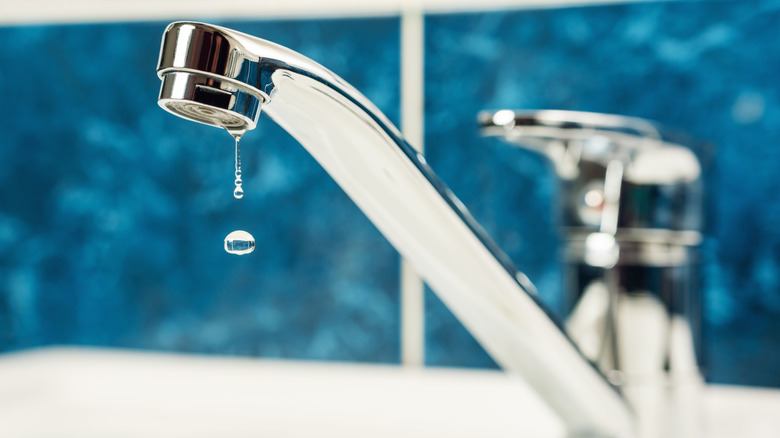True Or False: Will One Dripping Faucet Save Your Pipes From Freezing?
As temperatures plummet, homeowners often scramble to protect their plumbing from the costly damage caused by frozen pipes. One widely circulated tip is letting a faucet drip to prevent freezing, but does it work? Understanding the science behind freezing pipes can make all the difference in safeguarding your home during cold waves.
First off, the good news: Dripping faucets really can save your pipes during freezing months. However, it's not as straightforward as it sounds — and it's certainly not a cure-all. Many believe that leaving a faucet dripping prevents pipes from freezing because it keeps water moving, but even running water can freeze when temperatures drop low enough. In frigid weather, leaving your faucet open won't necessarily prevent your pipes from freezing.
That said, it can prevent them from bursting. The main reason why letting your faucets drip during cold snaps can protect your pipes from such a disaster is that the drip allows water and pressure to escape. When water inside a pipe freezes, it expands. However, the real danger occurs when the ice begins to thaw. As the ice shrinks, the built-up pressure combined with the sudden flow of water is what causes the pipe to burst. By leaving a faucet open, you allow water to escape as the ice thaws, relieving pressure and reducing the likelihood of a costly plumbing disaster.
Placement, timing, & drip level are key elements in pipe bursting prevention
As we've covered so far, opening up faucets is a key step in preparing your house for freezing temperatures. To know when to start opening faucets, keep an eye on the thermometer. When temperatures drop below 20 degrees Fahrenheit, it's a good indication that your pipes are entering the danger zone. But before opening up the closest faucet and calling it a night, you'll need to do a little more work to determine which specific area to target.
To achieve maximum results, it's best to start with the faucet farthest from your home's water source, so that water can travel through the entire system. If you're unsure where that is or want to be extra cautious, you can let a faucet drip in each room with plumbing — kitchen and bathroom, of course, but don't forget the basement or garage, which are often much colder. Faucets connected to pipes running along exterior walls are especially vulnerable to freezing and should be prioritized.
Once you've chosen your faucet (or faucets), set it to a slow, steady drip, allowing just a few drops of water to flow continuously. You might be tempted to turn on the hot water to keep pipes warm, but hot water travels through a separate pipe that is already less likely to freeze. Instead, let cold water drip. Keep the faucet dripping until temperatures rise back above 20 degrees Fahrenheit to ensure your pipes remain safe. In the meantime, do your best to keep yourself and your house warm and safe in the midst of such cold temperatures.

